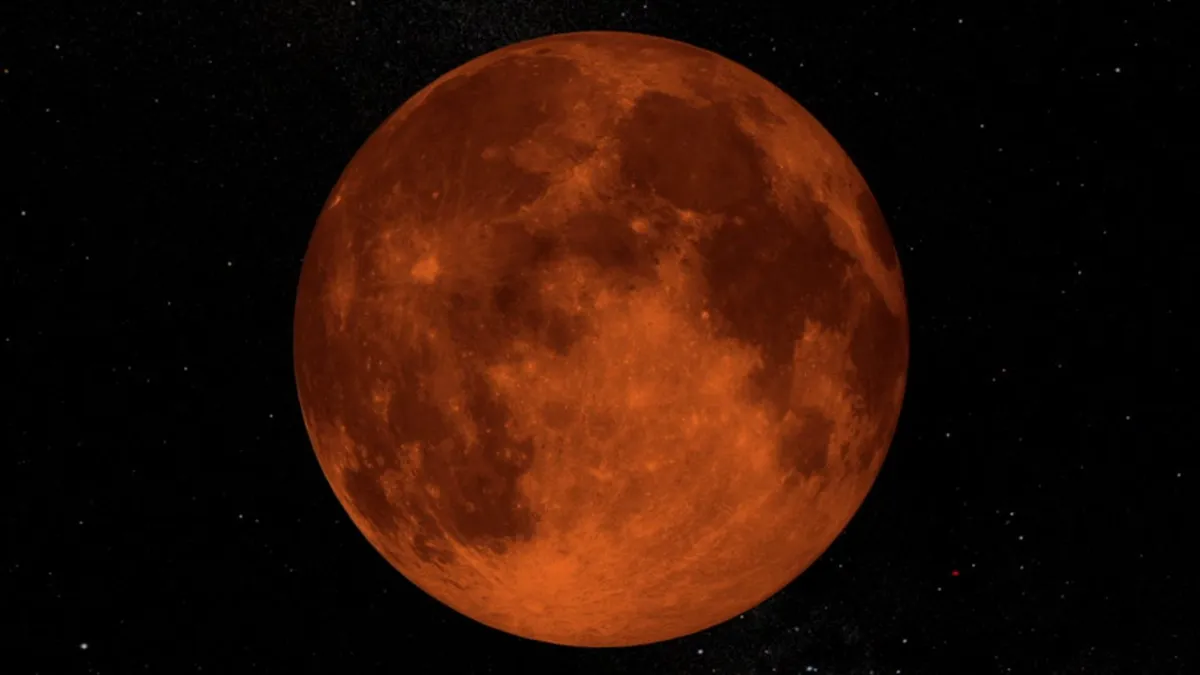
The much-anticipated blood moon total lunar eclipse will occur this Thursday night into Friday morning. If weather conditions are favorable, stargazers can expect a stunning display of the red moon, making it an excellent opportunity for both viewing and photography. Here’s everything you need to know about this celestial event.
A total lunar eclipse occurs when the sun, Earth, and moon align perfectly, causing the full moon to pass through the darkest part of Earth's shadow, known as the umbra. This alignment can give the moon a striking red-orange hue, leading to its nickname, the blood moon. Historically, this phenomenon often instilled fear in ancient civilizations, as many believed it to be an omen of evil. The last occurrence of a total lunar eclipse took place in November 2022. It’s important to note that a lunar eclipse is distinct from a solar eclipse, which occurs when the moon passes directly between the sun and Earth.
The total lunar eclipse will be visible across the entire Western Hemisphere, provided the skies are clear. This includes every U.S. state. The moon will begin to show signs of the eclipse just before midnight EDT on Thursday. The eclipse will officially start shortly after 1 a.m. EDT on Friday, with totality expected to occur between approximately 2:30 a.m. and 3:30 a.m. EDT.
One of the best aspects of a lunar eclipse is that no special equipment is required to enjoy it. Unlike solar eclipses, where protective glasses are essential, you can safely observe a lunar eclipse without any additional gear. However, using telescopes or binoculars can enhance your viewing experience. To get the best view of the blood moon, try to position yourself away from bright lights.
Your smartphone can capture impressive images of the blood moon total lunar eclipse. For those keen on photography, using a telescope can significantly improve the quality of your photographs. Experiment with different settings on your phone to capture the best possible shots of this spectacular event.
According to senior meteorologist Jonathan Erdman from weather.com, the best chances for clear skies on Thursday night will be found in parts of the mid-Atlantic states, the Ohio Valley, and the central Plains. Areas of the Florida Peninsula and Deep South Texas are also expected to have relatively cloud-free conditions. However, regions in the Rockies and Great Basin, stretching from Montana and Idaho to Nevada and Arizona, may experience showers and even higher-elevation snow. Additionally, a layer of high clouds could obscure the view in the northern parts of the U.S., from Dakota to New England.
Following this total lunar eclipse, a partial solar eclipse is set to occur on April 29, 2024. This event will temporarily block a portion of the sun and will be visible for a short time in certain areas of the Northeast. Mark your calendars for this upcoming celestial event!
For more information on celestial events, including the top happenings of 2025 and updates on SpaceX's latest tests, stay tuned to our weather updates.